Telehealth Technology: NantHealth Innovations and Future Healthcare
VerifiedAdded on 2023/06/10
|15
|933
|275
Presentation
AI Summary
This presentation delves into the telehealth technologies offered by NantHealth, focusing on innovations like GPS Cancer and NaviNet Open, which aim to connect patients, providers, and insurers across the healthcare continuum. It describes how these technologies provide crucial data for informed decision-making, emphasizing the role of real-time data in promoting outcome-focused planning through access to patient medical history, reduced infections, improved compliance, and early interventions. The presentation further predicts the impact of these technologies on future healthcare, highlighting improved patient care, increased healthcare access, reduced costs, faster diagnosis and treatment, and enhanced management of chronic illnesses, ultimately leading to a more empowered patient population and improved healthcare delivery.
1 out of 15
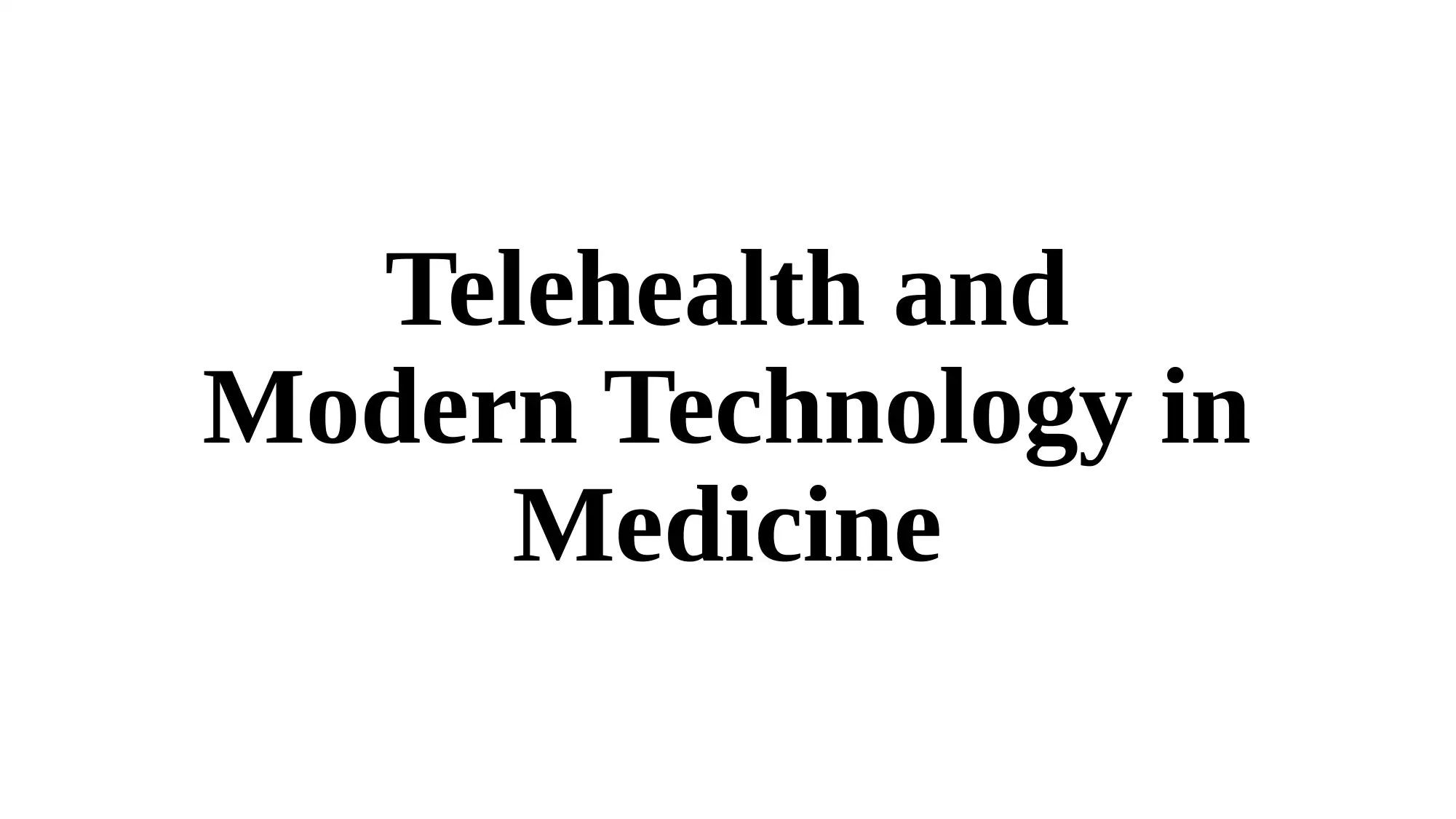
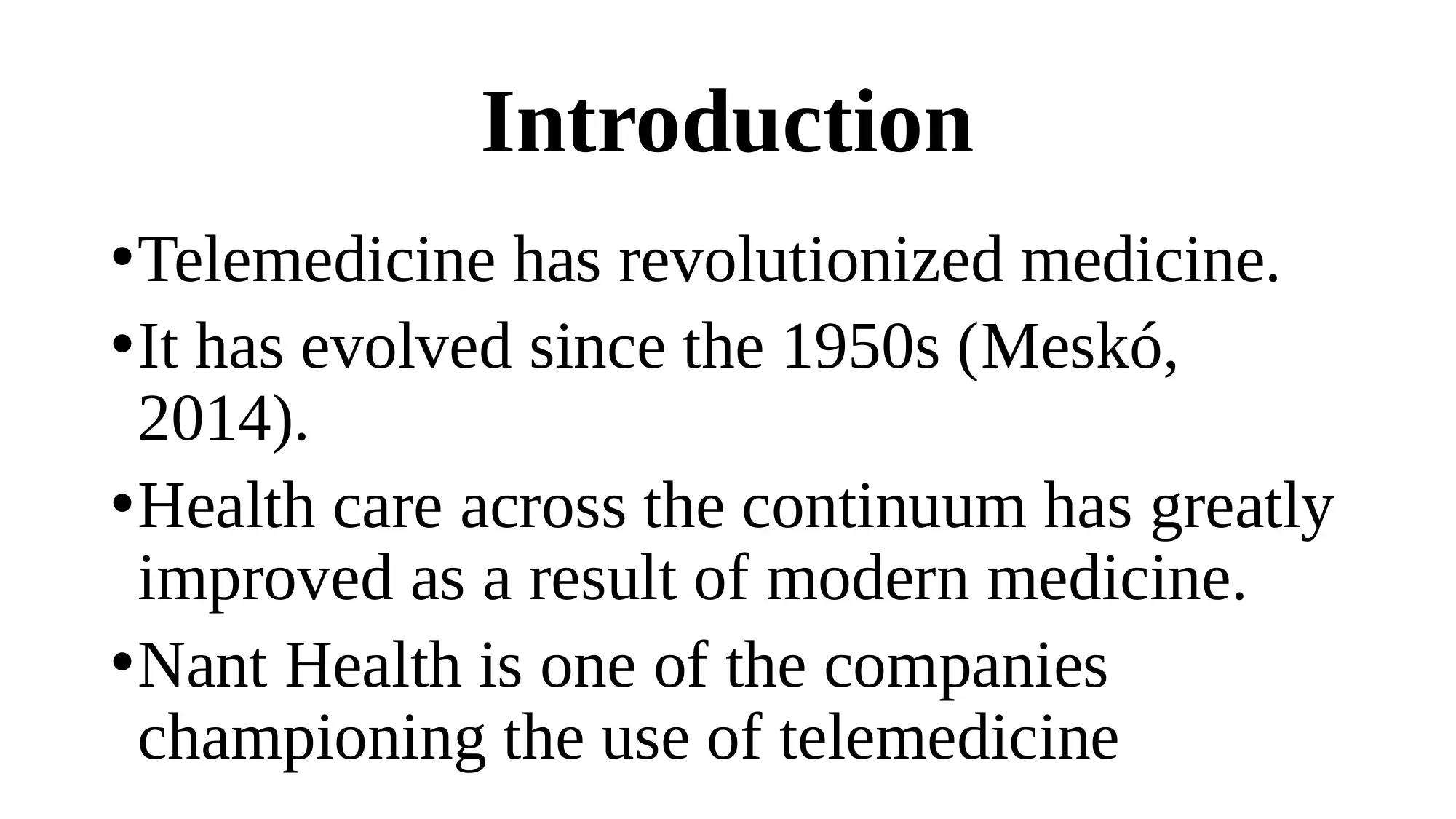
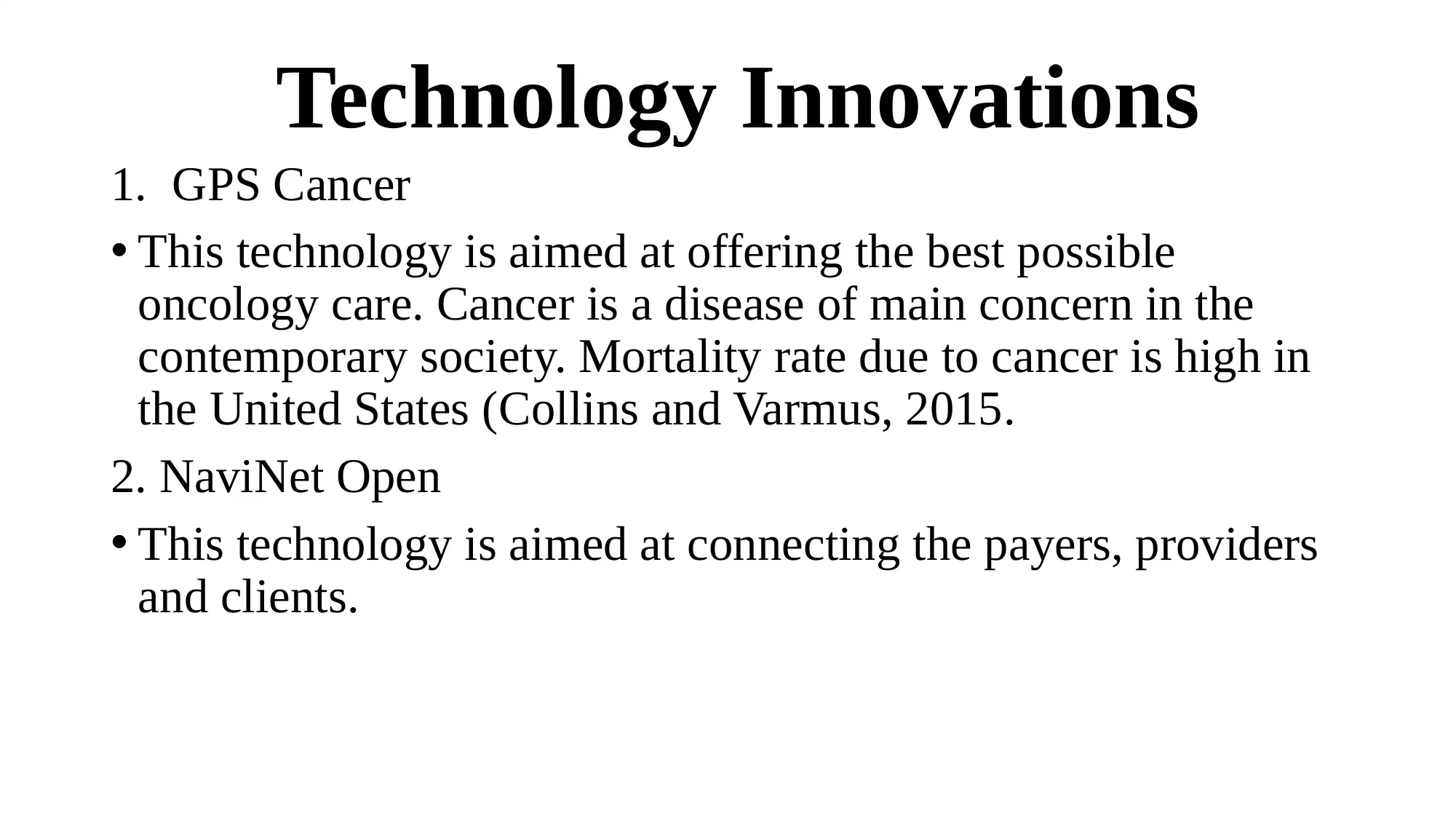

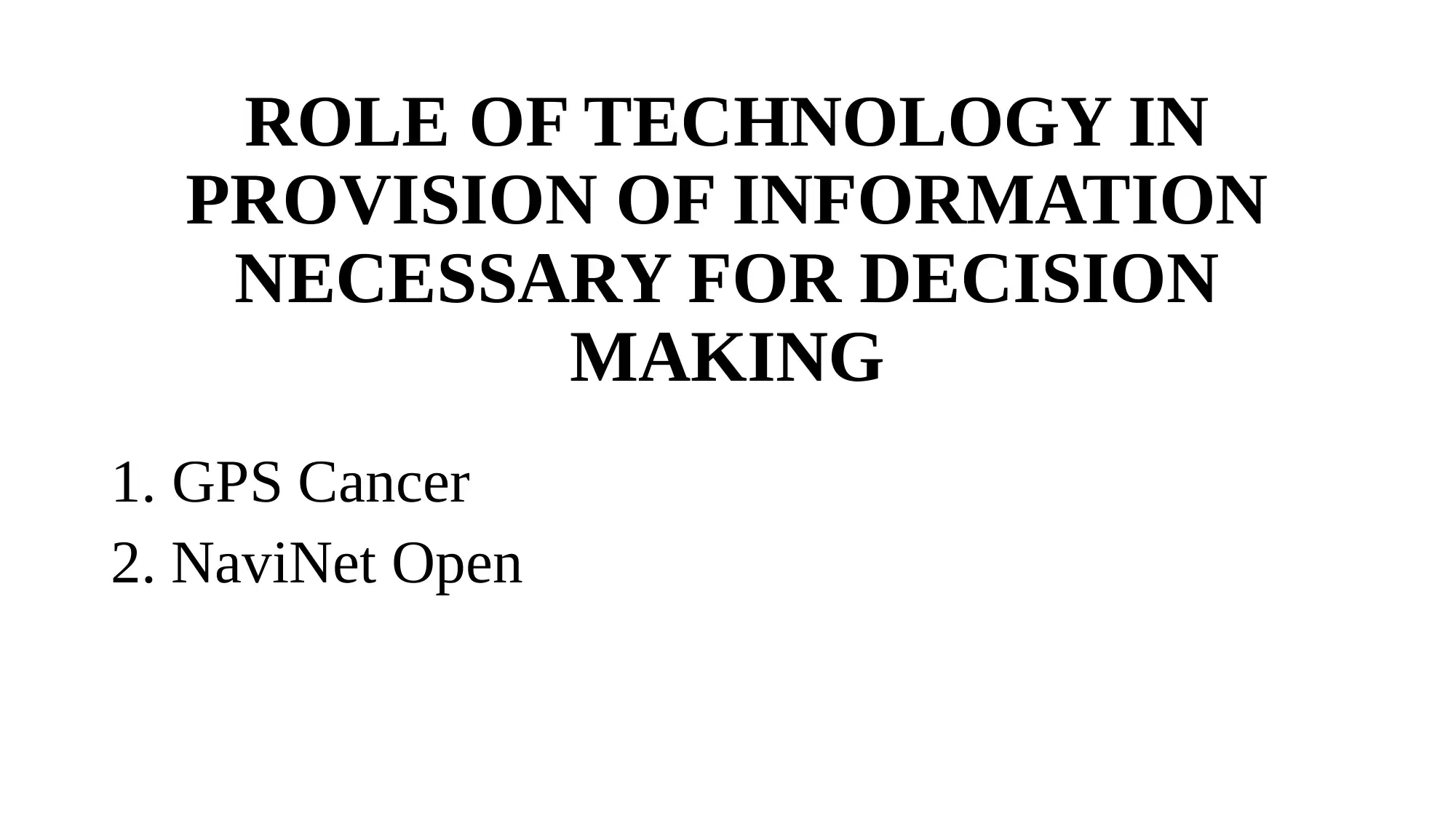
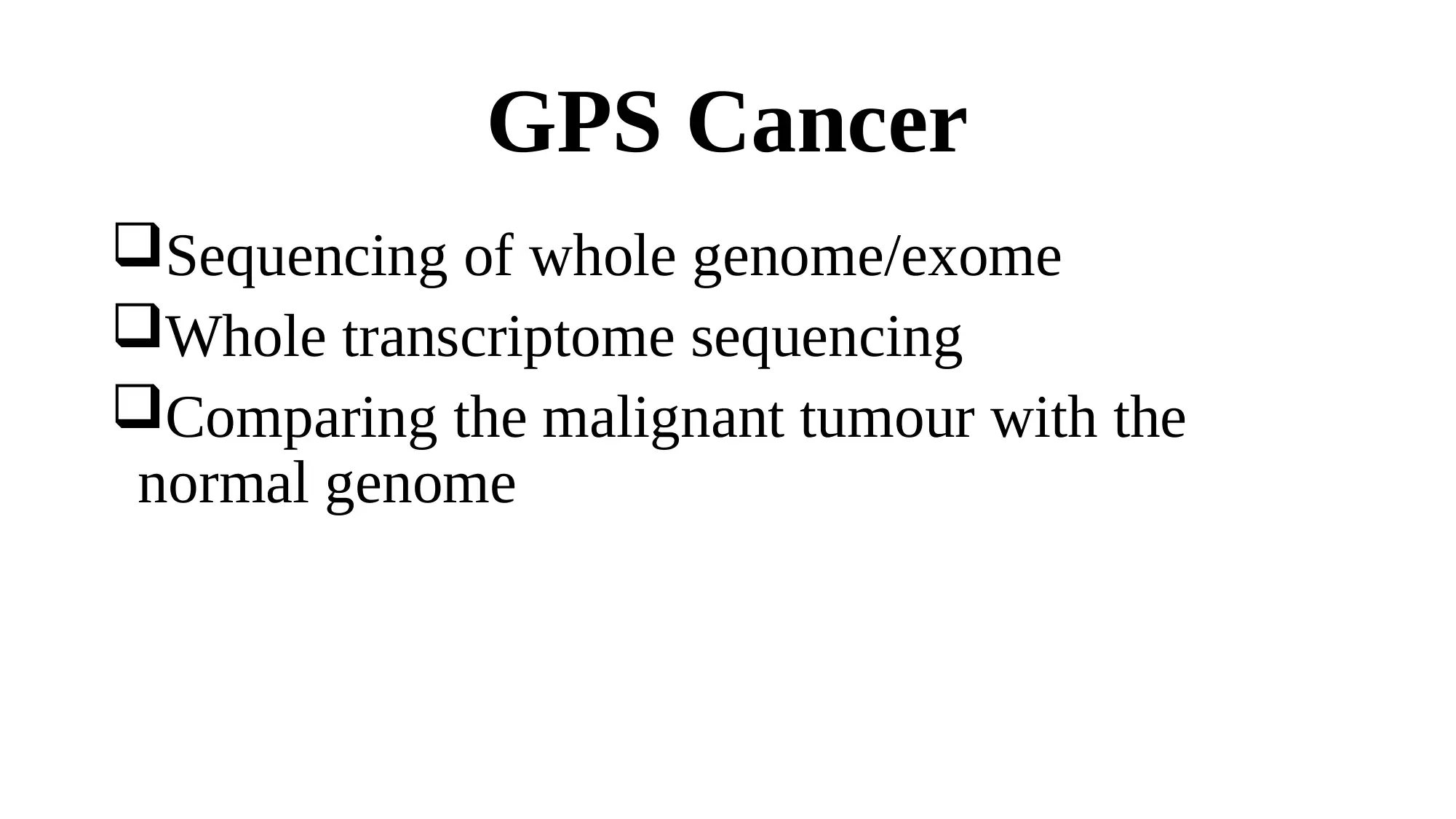
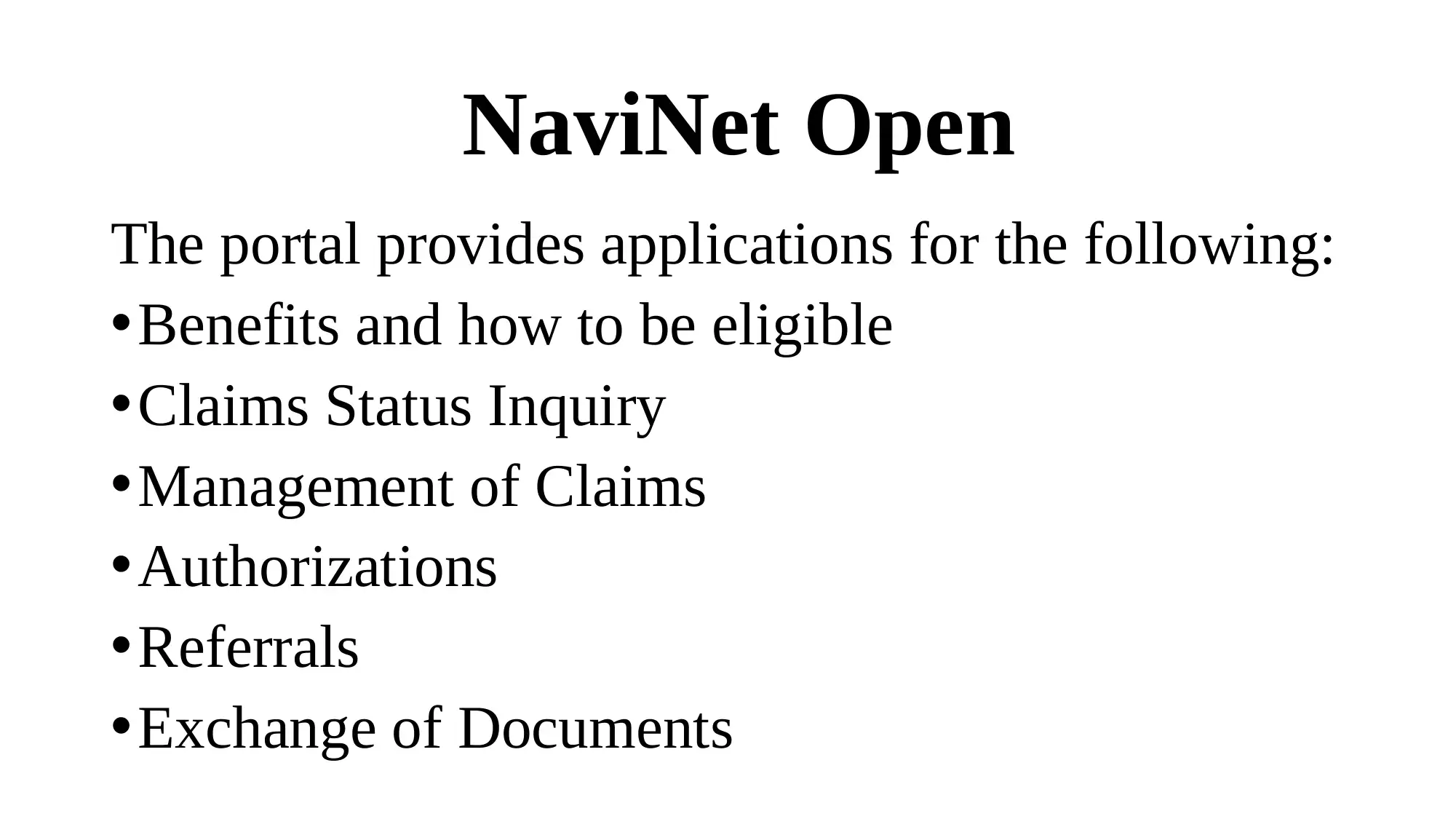
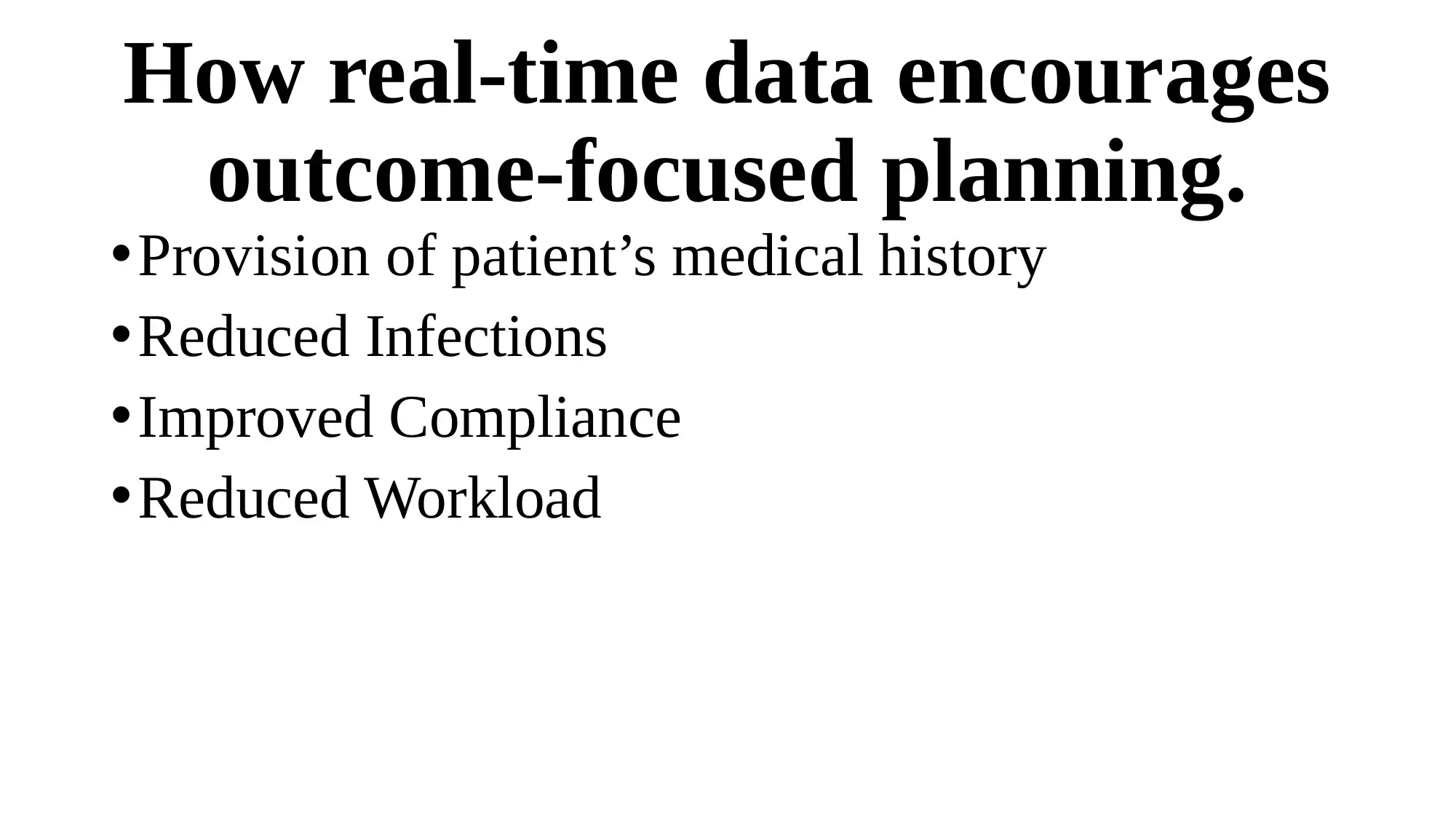
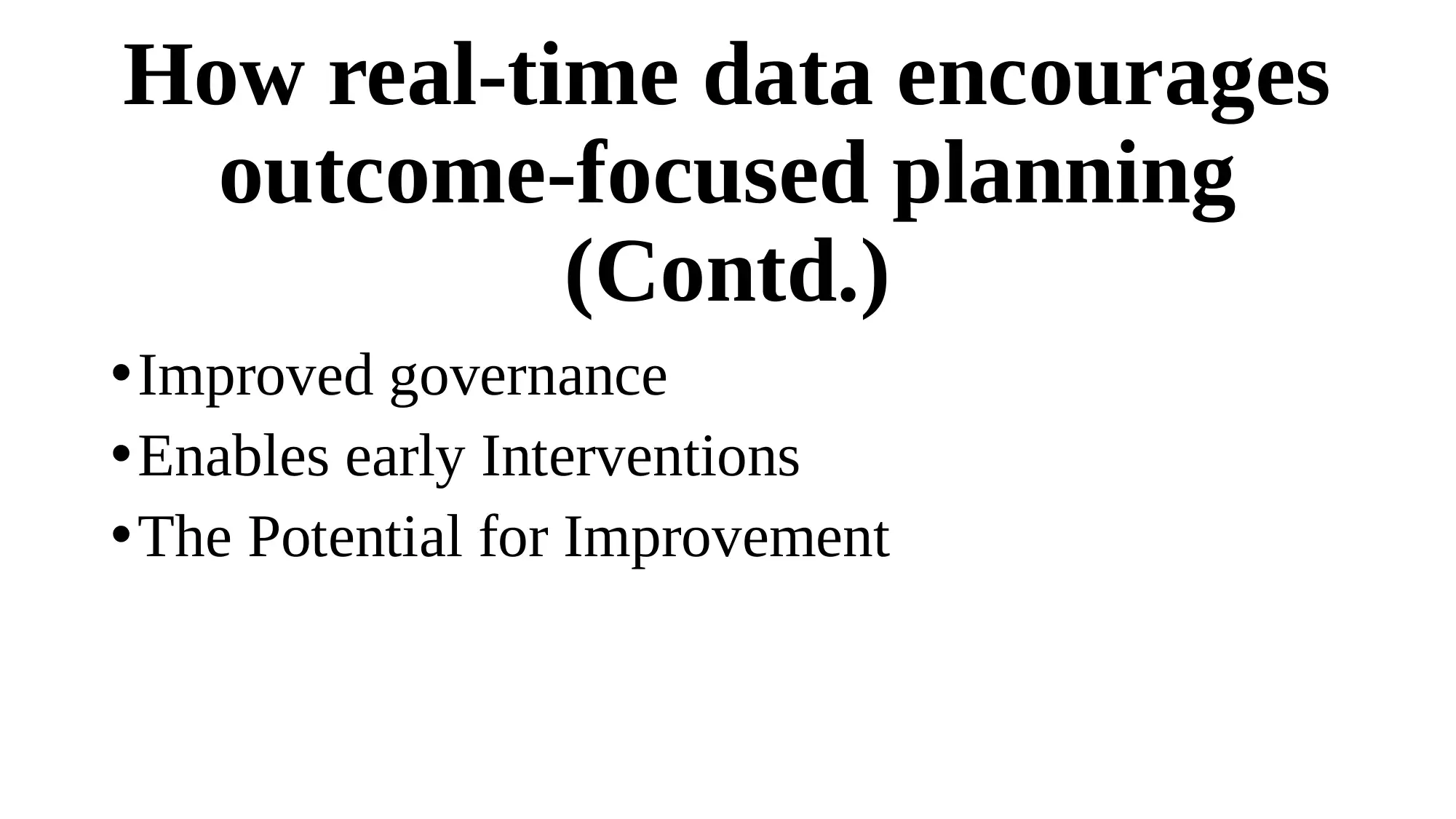
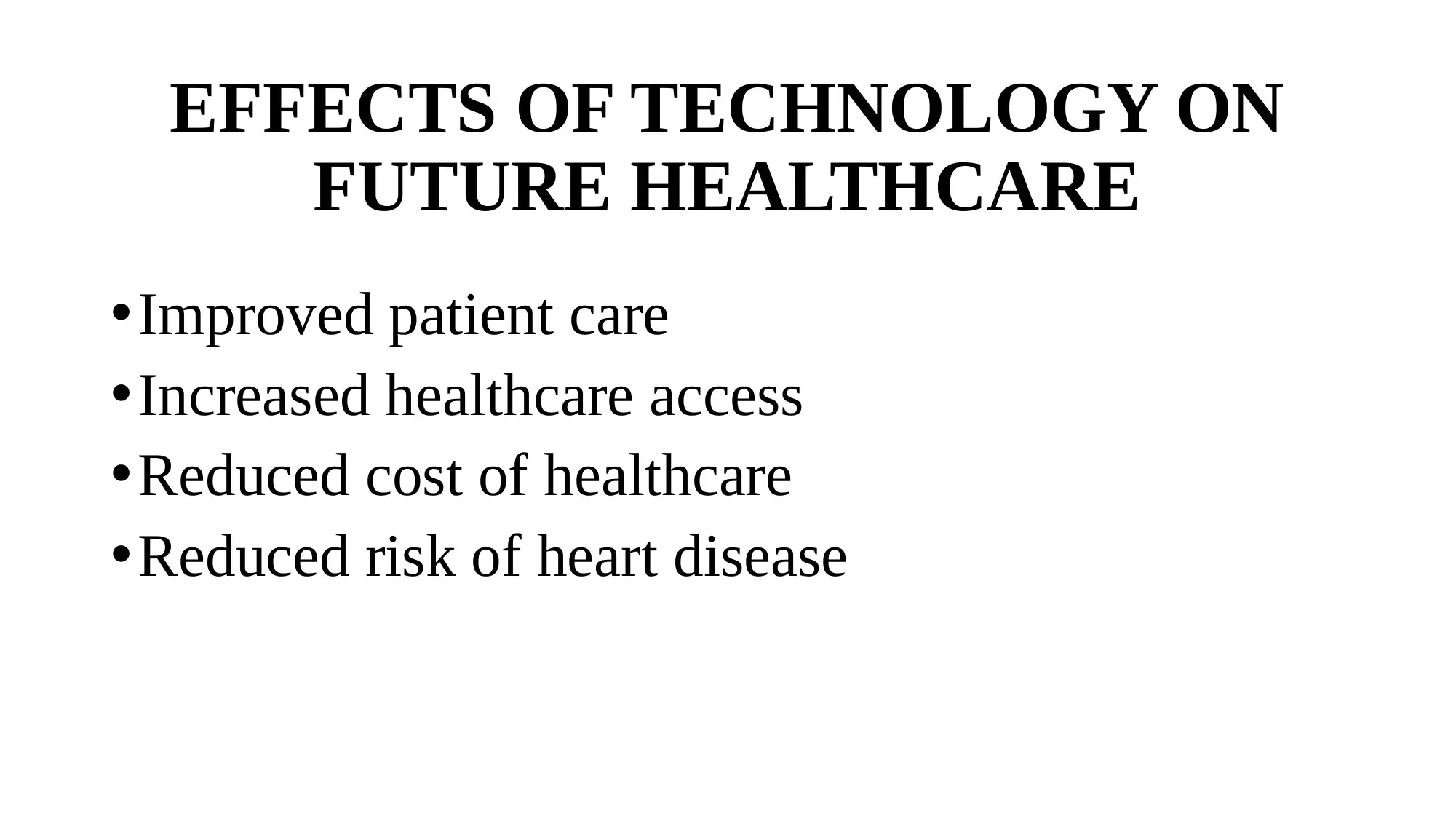
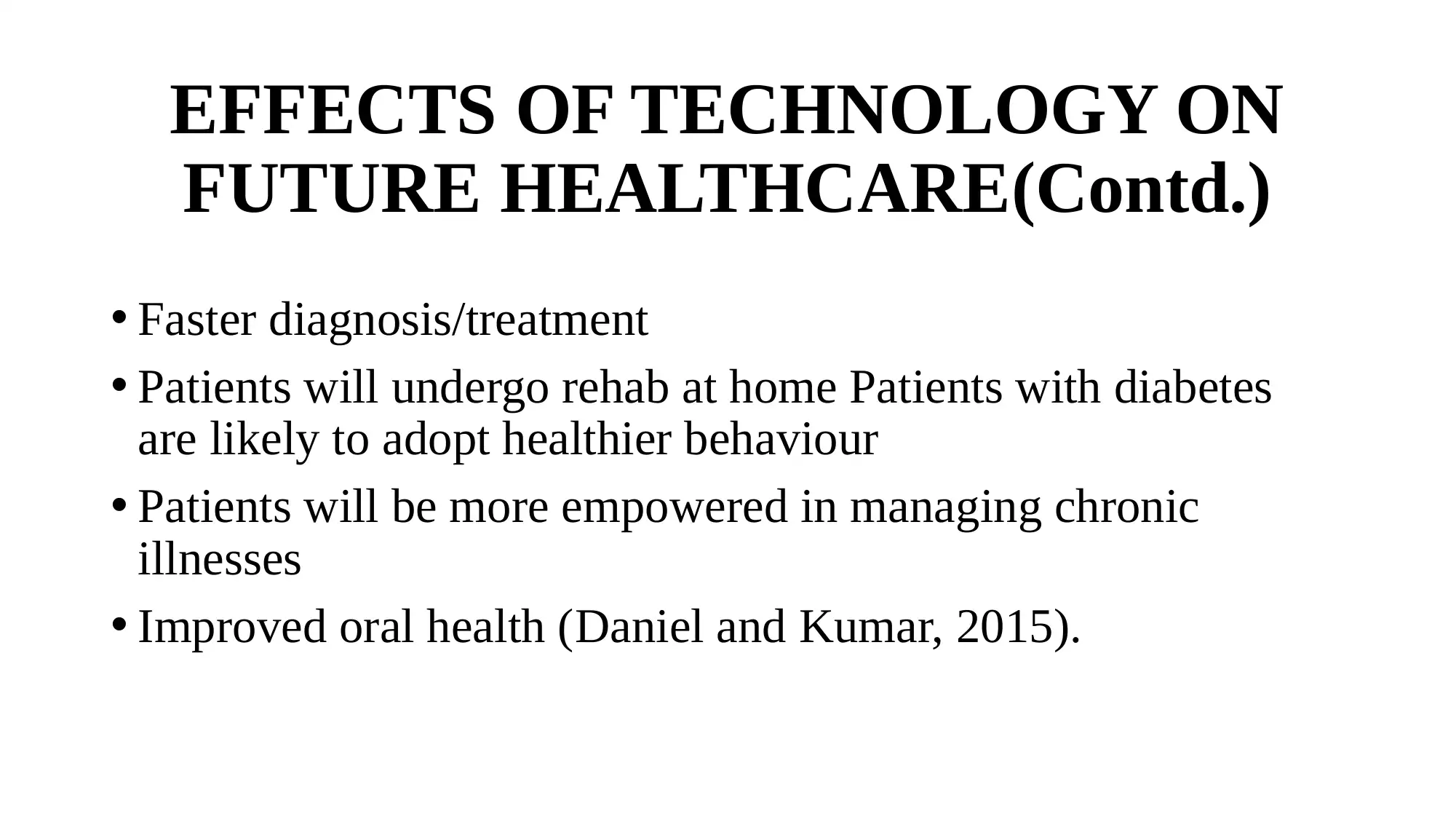
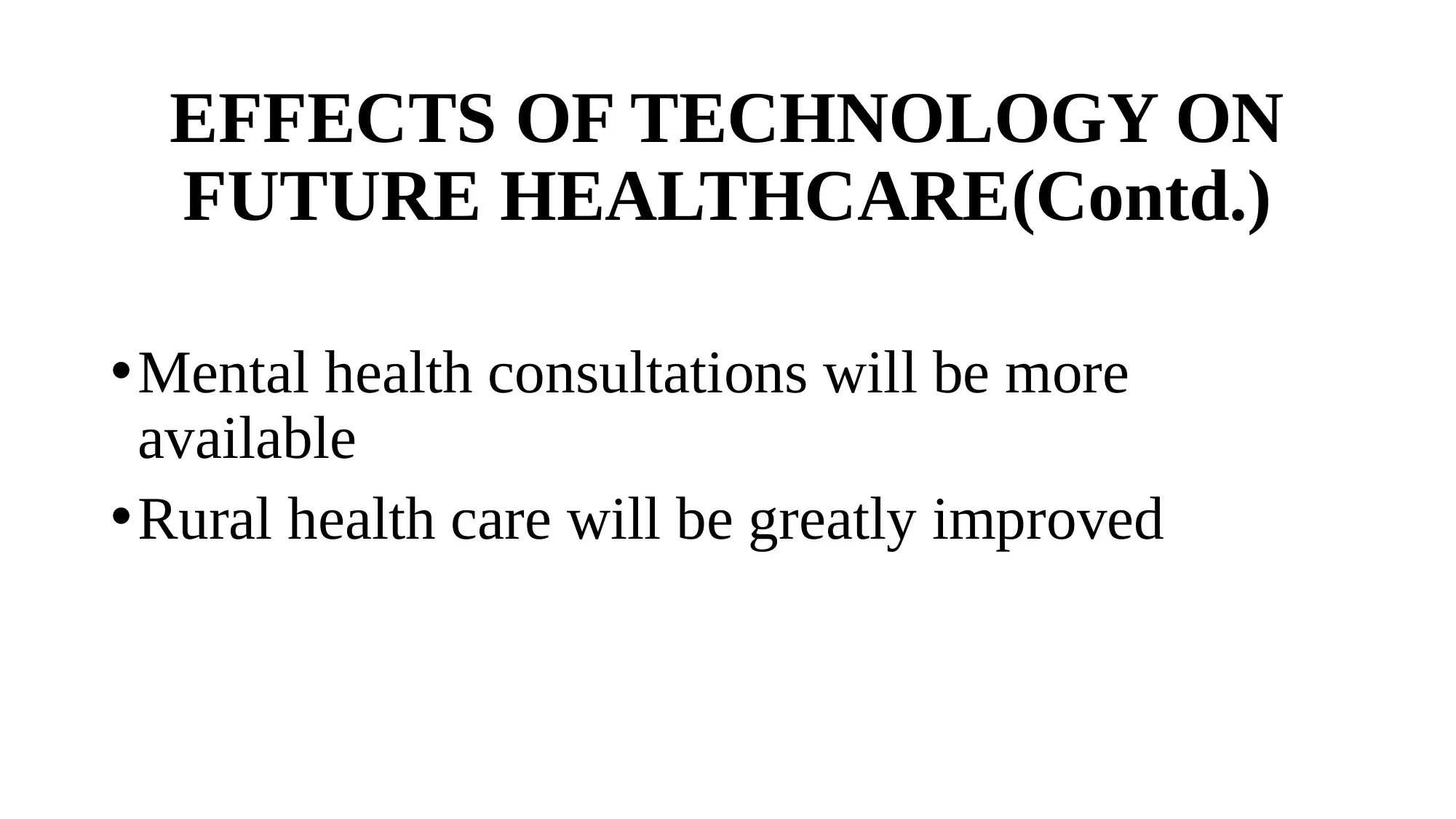
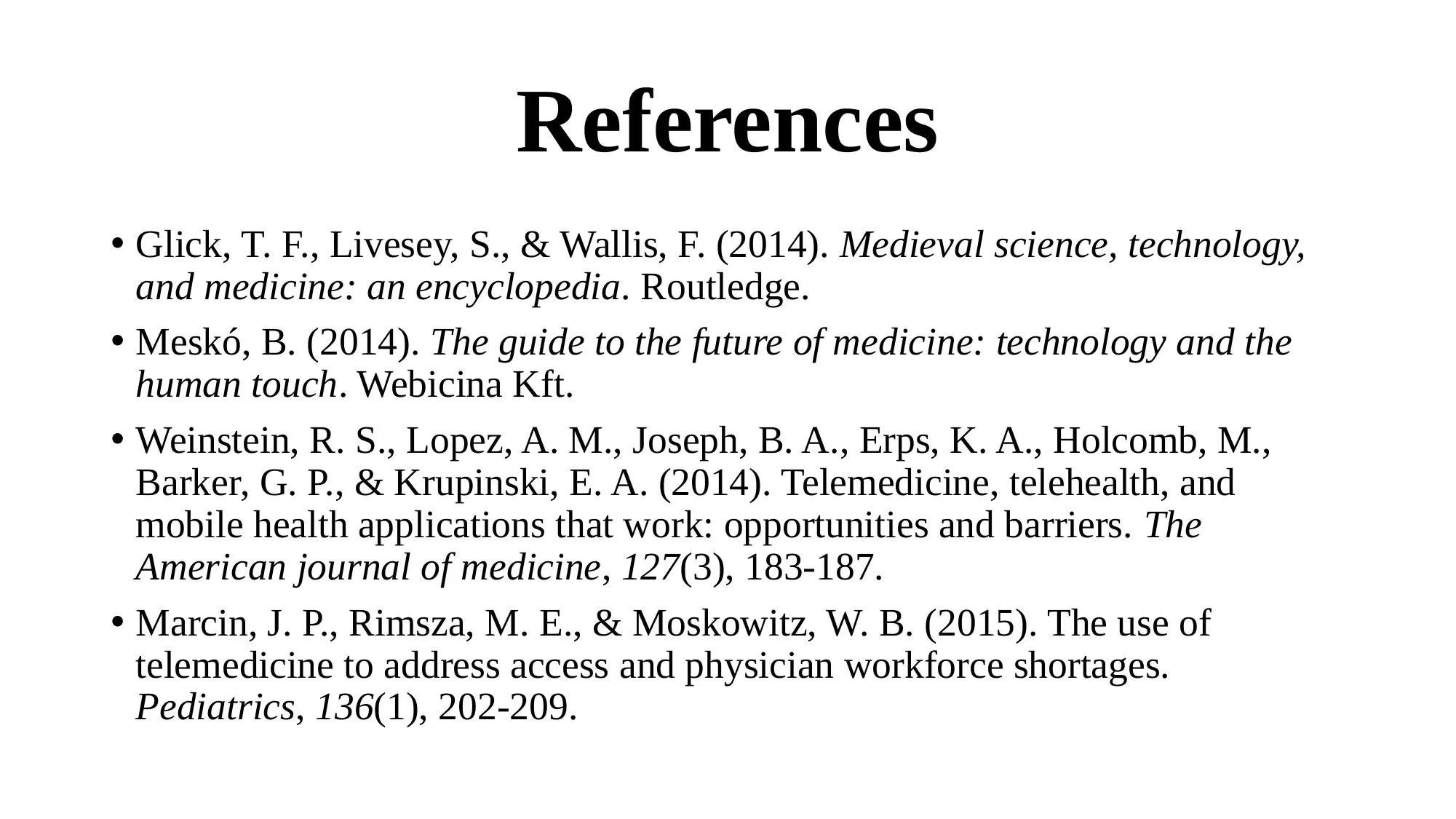






![[object Object]](/_next/static/media/star-bottom.7253800d.svg)